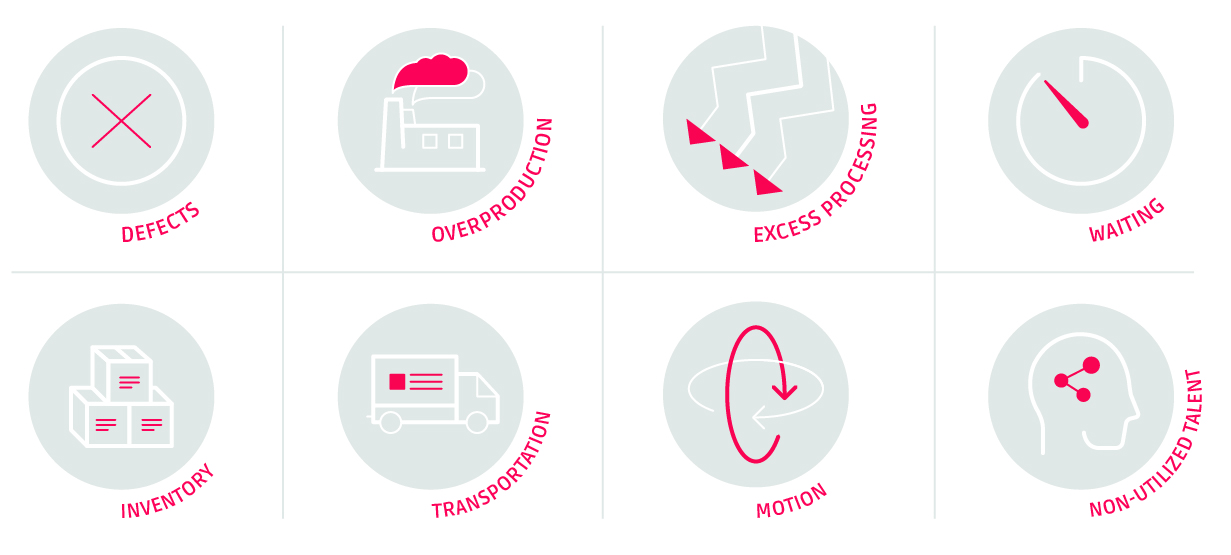Lean manufacturing has become a popular framework for industries across the globe. In short, lean is a methodology that focuses on minimizing waste and maximizing productivity. Waste is identified as any step or action in a process that may not be necessary or fails to add value to an operation. Examples of waste can be found in time management, material, labor and other production factors.
To integrate lean manufacturing into your own facility, it’s important to identify the key wastes and how to properly manage them. Here’s a closer look at lean waste and how to minimize it in your manufacturing process.
1. Defects
Defects are known as products or services that do not meet company or customer standards. This can be caused by inadequate quality control, machine malfunctions, lack of proper documentation and poor communication with customers.
To manage defects in your facility, make sure quality control measures are established at every step of production. This will ensure all products leaving the facility meet company standards. Regular preventative maintenance should also be scheduled to ensure every machine is running properly and efficiently.
2. Overproduction
Companies often produce more products than customers demand, which ultimately leads to wasted products. To avoid overproduction, manufacturers should make sure production schedules are in line with product orders, as well as keep track of data that forecasts future demands. Make sure only items that are frequently requested are left in stock to avoid wasted time and costs of production.
3. Excess Processing
Excess processing refers to extra work or steps in a process that is not necessary for production. This can be a result of improper data collection, lack of communication and overlapping areas of authority.
One helpful way to combat excess processing is through process mapping technology. Process mapping helps define and optimize workflow by mapping out operations step by step to get a birds-eye view of the process. This can be a helpful way to cut out extra steps and streamline production.
4. Waiting
Time spent waiting for previous production steps or machine malfunctions can have a negative impact on cost effectiveness. To avoid wasted time, manufacturers should take proper maintenance measures to prevent unscheduled downtime. Additionally, solid lines of communication should be established throughout production teams to ensure products can move from machine to machine seamlessly.
5. Inventory
Similarly to overproduction, inventory waste refers to excess products being stored without customer demands. Large inventories involve significant holding costs, and raw materials or finished products collecting dust on the shelf is only wasting money.
To manage inventory waste, manufacturers should have proper purchasing, forecasting and scheduling technology set in place to stay on top of trends and avoid miscommunications. Manufacturers should also try to only stock necessary materials and avoid overproducing products.
6. Transportation
Transportation waste includes the time, money and resources involved with unnecessary transportation of materials throughout the facility. Every material should have a pathway mapped out to optimize production efficiency, and products should not have to travel far to move from one stage to the next. You may need to consider redesigning your facility layout to improve organization. This will improve the flow of the facility and minimize associated waste.
7. Motion
The waste of motion refers to any unnecessary movements of people, materials or equipment, including walking, lifting, searching for materials and sifting through inventory. To properly manage motion, manufacturers should ensure the facility is well organized and set up efficiently so equipment and materials are in the right location for production to flow easily.
8. Non-Utilized Talent
While non-utilized talent is not a production waste, it is a waste of human potential, which can have a major impact on productivity. This can come from not properly training employees on new equipment or technology, as well as underutilizing employee potential for feedback or developing new ideas.
To manage this waste, employers should schedule routine training for all employees to learn new equipment or brush up on previous knowledge. Employers should also keep lines of communication open for employees to provide feedback and suggestions on ways to improve operations.
Want to learn more about lean manufacturing?
Tweet us @AppleRubber to continue the conversation.

